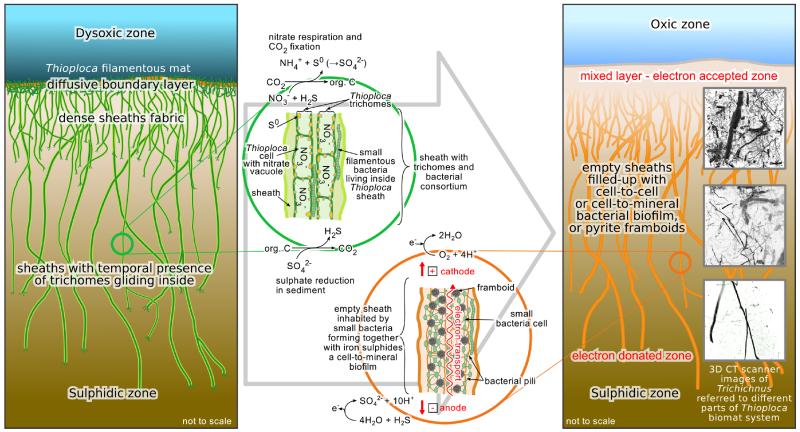Figure 3.
Model of the origin of Trichichnus. The ecology of Thioploca mat system and their sulfide oxidation chemistry (left). The Thioploca sheath system below the diffusive boundary layer forms a construction which may be inhabited by small bacteria making the conductive nanowire–pyrite framboid biofilm. This triggers the electric self-potential between the sulfidic zone and mixed layer, thus, the electron flow (right). The different part of the Trichichnus and the different part of the former Thioploca mat system are shown for comparison (right). Thioploca spp. nitrogen, carbon and sulfur metabolism reactions are taken from Teske and Nelson (2006); half-reactions on Trichichnus are adapted from Nielsen and Risgaard-Petersen (2015).

